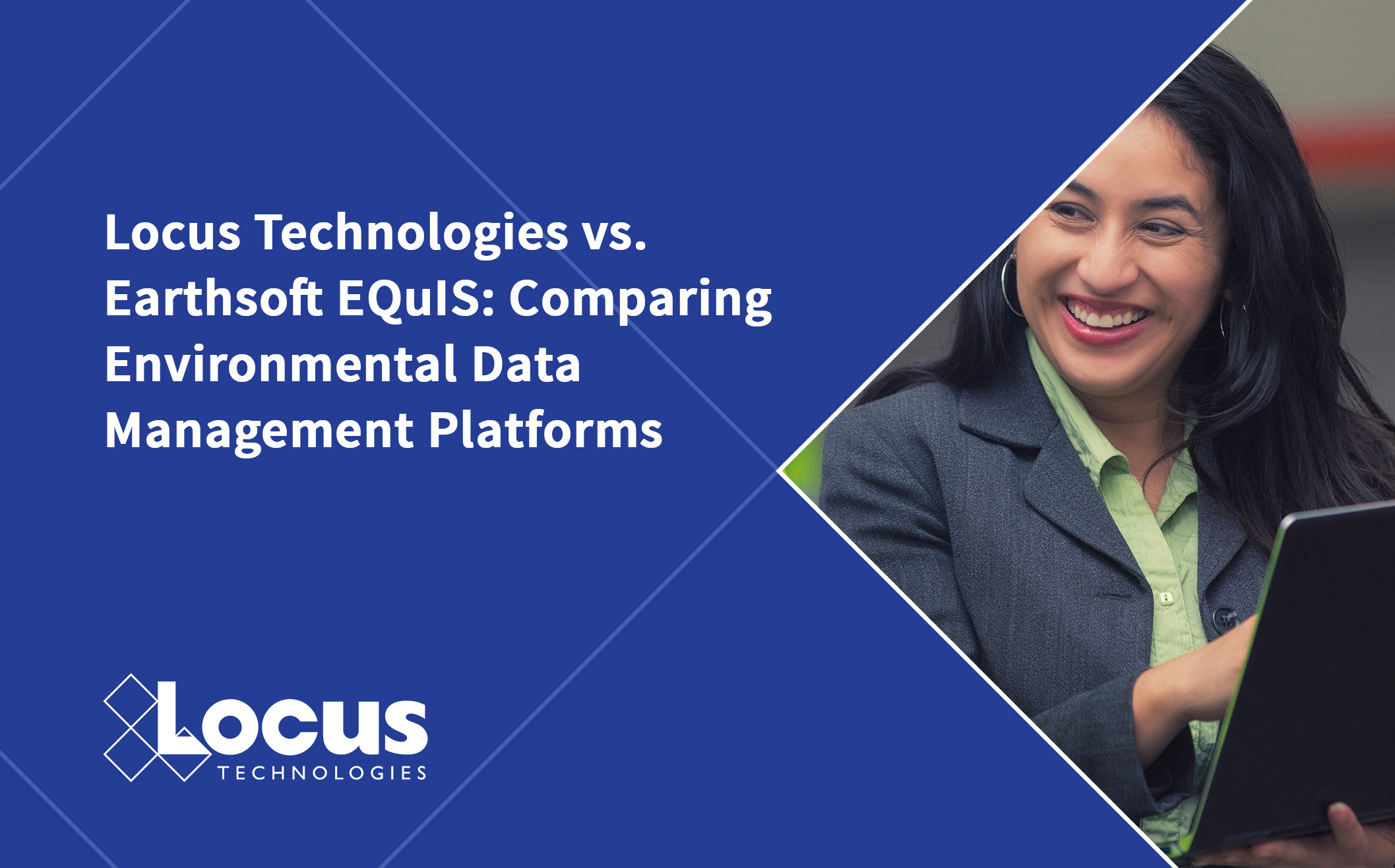How Locus Software Simplifies GHG Compliance: From California SB 253 to Federal and State Reporting

Reading Time: 4 minutes
For EHS and ESG professionals in large companies, the landscape of greenhouse-gas (GHG) reporting is moving fast. Between evolving frameworks, state mandates and heightened verification requirements, staying ahead is tough. With the new California Senate Bill 253 (SB 253) and similar laws, the time to prepare is now. Fortunately, the right software platform, such as Locus GHG Management Software, can turn complexity into control.
A busy reporting environment
Regulators, investors and stakeholders are demanding more. In the U.S., SB 253 and its companion California Senate Bill 261 (SB 261) push large companies into detailed, verified emissions disclosure. SB 253 applies to corporations with global revenue ≥ $1 billion doing business in California, and mandates reporting of Scope 1, 2 and 3 emissions under the Greenhouse Gas Protocol along with third-party assurance. SB 261, with a lower revenue threshold, adds narrative climate-risk disclosures.
Meanwhile, existing programs like the Greenhouse Gas Reporting Program (GHGRP), and state regimes such as California GHG Mandatory Reporting Regulation (GHGMRR), are still in play. The message is clear: you need a reliable method to capture various usage data and calculate emissions, across jurisdictions, and report where required.
Key compliance obstacles for large enterprises
Even experienced environmental teams face practical hurdles:
- Data proliferation & fragmentation
Large companies must aggregate utility bills, field-fuel data, mobile combustion, supply-chain (Scope 3) inputs, often across continents and business units. Without unified systems, data comes in from everywhere– and managing it is a challenge.
- Varied reporting frameworks and emission-factors
Reporting isn’t one-size-fits-all. You may need to align to GHGRP, GHGRR, SB 253, and voluntary frameworks (e.g., GRI/CDP) — each with its own factors or calculation rules. Tracking which factors apply, at which time, to which asset is significant work.
- Data-gaps, accuracy & verification readiness
With Scope 3 becoming mandatory under SB 253 (starting2027) and many companies still using spreadsheets, gaps are inevitable. Verification demands that you not only compute emissions but also document sources, apply correct methods, and trace your work from raw data through roll-up.
- Legacy spreadsheets = audit-risk
Many firms still rely on dozens ofspreadsheets patched together. That invites errors: different versions, inconsistent units, and no audit trail of who changed what. When limited and reasonable assurance providers test your inventory, they’re looking for transparency, not black boxes.
- Unit-conversions & global consistency
Facilities across geographies use different units (e.g.,m³, litres, gal). Converting everything into metric ton CO₂e consistently, with the right global warming potentials (GWPs), is tedious and error-prone if manual.
- Multi-temporal reporting & drill-down analytics
Beyond annual reports, internal stakeholders often want monthly or quarterly tracking. With spreadsheets, you may hit thousands ofrows and pulling apart that data for drill-down by facility, source, or business unit is a nightmare.
The roadmap to compliance success
To get ahead, consider this four-step roadmap:
- Identify applicable laws, frameworks and boundaries: Know whether SB 253, SB 261, GHGRP, or state-level programs apply — and define your boundaries (organization, facilities, supply chain) clearly.
- Assess data gaps: As data comes in from multiple streams, map what you have, what’s missing, and document processes for filling gaps.
- Deploy a robust inventory system: Replace spreadsheets with a dedicated tool that supports multiple frameworks, tracks versions, audit trails and unit-conversions, and validates data.
- Set timelines and processes for roll-out: Large organizations cannot flip a switch. You’ll need to train users, revise workflows, on board assurance providers, and ensure your data-chain is ready for inspection.
How Locus software helps
Here’s how Locus addresses those obstacles in real-world enterprise settings:
Centralized one-stop reporting
With Locus, you enter data once and use it across frameworks (Scope 1, 2, 3), regions and facilities. The software supports emissions results for different protocols and jurisdictions through a single system of record.
Unified data ingestion & APIs
Whether fuel-use data, utility bills or IoT sensors, Locus enables batch uploads (CSV) and API integrations to external systems and data lakes — reducing manual entry and increasing reliability.
Data-validation workflows with audit trail
Built-in workflows enable multi-step review: data entry → validation → emission calculation. Every step is logged with notes so that when verifiers ask “who changed what and why?”, you have a clear history.
Up-to-date emission-factor library
Locus maintains an emission-factor library by scope and topic, keeps it current with regulatory updates, and allows transparent calculation modelling.
Transparent calculation engine
Rather than an opaque “black-box”, Locus offers full visibility into how emissions are calculated: e.g., activity × factor × GWP = tCO₂e. Verifiers can trace back through the system, reducing their time and cost.
Dashboards, drill-down & exports
Locus software provides configurable dashboards for Scope 1-2-3 roll-ups with drill-down by source/facility. It supports XML exports (e.g., for upload to systems like Cal e-GGRT) and connectors to business intelligence tools such as Power BI or Tableau.
Supplier-survey integration for Scope 3
The software makes it easy to collect emissions data from suppliers via survey links; the survey feed flows into the GHG inventory for downstream categories. This supports SB 253’s looming Scope 3 requirement.
The bottom line for EHS/ESG leaders
With SB 253 and related mandates approaching (Scope 1-2 from June 2026; Scope 3 post-2027 with a safe harbor to 2030), the window for action is narrow.
The most common risks won’t be lack of ambition; they’ll be weak processes, disjointed spreadsheets and low transparency. Using an enterprise-grade platform like Locus shifts your effort from firefighting to strategic alignment: ensuring that when assurance arrives, you’re ready.
Adopting a robust software backbone doesn’t just simplify compliance — it builds credibility, preserves financial and reputational capital and readies you for the next wave of regulation and stakeholder scrutiny.
Snetu Karania
Product Manager
Snetu Karania is in charge of Products at Locus Technologies, including out-of-the-box applications that work with Locus Platform. She has led the design and configuration of various web applications such as Task & Compliance Management, Greenhouse Gas Reporting, Audit/Inspection Management, Sustainability, and Air Emissions Reporting. She has also worked with clients from various industries such as utility companies, energy and natural gas infrastructure, waste management, food processing, and ports.
Prior to joining Locus, she worked for an environmental consulting firm, gaining a wide range of experience in environmental analyses and reporting. Snetu graduated from Stanford University with two Masters’ degrees: Environmental Engineering and Science and Environmental Fluid Mechanics and Hydrology.
Locus is the only self-funded water, air, soil, biological, energy, and waste EHS software company that is still owned and managed by its founder. The brightest minds in environmental science, embodied carbon, CO2 emissions, refrigerants, and PFAS hang their hats at Locus, and they’ve helped us to become a market leader in EHS software. Every client-facing employee at Locus has an advanced degree in science or professional EHS experience, and they incubate new ideas every day – such as how machine learning, AI, blockchain, and the Internet of Things will up the ante for EHS software, ESG, and sustainability.




